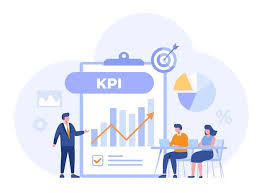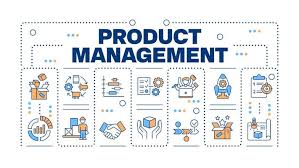How do you audit and manage open-source dependencies and their licenses?
From startups to multinational corporations, organizations rely heavily on open-source dependencies, creating a complex web of interconnected code. While this accelerates development and offers unparalleled flexibility, it also introduces significant security challenges and legal complexities that demand rigorous auditing and management.Overlooking these aspects can lead to severe repercussions, from costly data breaches to legal disputes and reputational damage.
The imperative of open-source auditing
At its core, open-source auditing is an essential practice for safeguarding your technological assets and business continuity. Risk Mitigation: Technical due diligence, which is an in-depth evaluation of a target company's technology stack, infrastructure, and ability to scale, inherently includes scrutinizing open-source components. This process reveals hidden technological risks, such as cybersecurity vulnerabilities or outdated systems, that can impact post-transaction operations. Critically, poor code quality and security flaws in dependencies can jeopardize application performance, scalability, and significantly increase the risk of exploits, data breaches, and compliance failures. Auditing proactively identifies and resolves these issues before they impact your business.
Value Assessment and Compliance: For potential buyers or investors, tech due diligence aids in assessing the true value of tech assets and their alignment with strategic goals. It ensures that the target company adheres to relevant tech-related laws and regulations, particularly concerning data protection and privacy. Moreover, licensing audits are crucial for ensuring compliance with the legal terms of the software you use. Using a GPL-licensed library in a proprietary product without releasing the source code, for instance, would violate the license, exposing your organization to legal risks and damaging trust within the open-source community.
Navigating the Complexities of Open-Source Licenses
The open-source ecosystem presents a nuanced challenge due to the varied requirements of its licenses. Understanding Dependency Types: Dependencies generally fall into two categories: direct dependencies, which are libraries your code directly calls, and transitive dependencies, which are libraries utilized by your direct dependencies. While permissive licenses (like Apache or MIT) allow broad use, copyleft licenses (like GNU GPL) can impose more restrictive obligations, sometimes requiring derivative works to be open-sourced under the same license.
Legal Obligations and Practicalities: As a user, you are legally obligated to adhere to all applicable licenses, regardless of the top-level license of the overall software package. There's no "umbrella coverage" provided by a permissive license that shields you from the obligations of other included components. However, generating a complete Software Bill of Materials (SBOM) for every open-source package and conducting a full analysis of all applicable licenses can be a daunting, often impractical, task.
A Risk-Based Approach: To manage this complexity, a risk-based approach is often adopted. The primary focus should be on direct dependencies, as their interactions with your proprietary code are more likely to raise significant compliance concerns under copyleft licenses. Transitive dependencies generally pose a lower risk, though rare exceptions exist where they can be highly impactful. Additionally, adhering to attribution notice requirements is a necessary, albeit administratively burdensome, element of license compliance.
Essential Tools and Techniques for Management and Auditing
Effective open-source management and auditing require a combination of robust tools and systematic practices. Automated Scanning and Analysis Tools:
• Software Composition Analysis (SCA) tools are indispensable. They analyze software packages and libraries to identify vulnerabilities and compliance issues, offering a comprehensive view of your building blocks. Tools like Snyk and npm audit are popular choices. Snyk Open Source, for instance, can generate an SBOM, a vital report that lists all your software assets, aiding in license compliance and security monitoring.
• Static Application Security Testing (SAST) tools analyze source code without executing it to identify potential security flaws early in the development cycle. Many SAST tools also include features for detecting open-source risks, such as insecure use of third-party libraries or outdated packages. Notable examples include Codacy, SonarQube, Snyk Code, Checkmarx, Veracode, Fortify Static Code Analyzer (SCA), Semgrep, Klocwork, DeepSource, and Coverity. These tools often offer detailed reporting to help prioritize issues and track progress.
Integration and Workflow Enhancement:
• CI/CD Pipeline Integration: Integrating security scans into your continuous integration/continuous deployment (CI/CD) pipelines is paramount for automating security checks early in the development lifecycle, preventing insecure code from reaching production. Tools should integrate seamlessly with platforms like GitHub Actions, GitLab, Bitbucket, or Jenkins.
• Real-time Feedback: Look for tools that provide immediate feedback to developers during coding, allowing issues to be addressed as they arise. Many tools offer IDE integrations for this purpose.
• Customizable Rules: The ability to customize scanning rules allows organizations to fine-tune tools to their specific coding standards and enforce internal policies.
Contractual Safeguards:
• Beyond technical tools, implementing "right to audit" clauses in contracts with vendors and partners is critical. These clauses grant you the legal authority to access and review records, processes, or activities to verify compliance with contractual obligations, information security practices, and accurate reporting of financial transactions or royalties. This enhances transparency and accountability, mitigating risks of non-compliance or undisclosed outsourcing.
Best Practices for Proactive Open-Source Governance
A strategic approach to open-source governance is key to mitigating risks and leveraging opportunities.
• Version Pinning and Regular Updates: Always pin dependency versions to prevent unexpected updates and implement a systematic update schedule for all dependencies. This helps manage the evolving threat landscape.
• Defined Security Policies: Create and maintain a clear security policy file that outlines your organization's stance on dependency usage and vulnerability reporting.
• Continuous Monitoring: Security is not a one-time check. Employ continuous monitoring to stay vigilant against emerging threats and swiftly adapt security practices. Regular audits and assessments are essential to ensure ongoing compliance and identify new risks.
• Comprehensive Documentation: Maintain thorough documentation of architectural diagrams, development and deployment pipelines, and internal audit reports. Poorly documented ventures can face significant challenges during due diligence, underscoring the importance of clarity and accuracy.
• Engage Experts: For an unbiased and comprehensive assessment, consider engaging external third-party experts specializing in technical due diligence. Their experience in assessing complex systems can provide invaluable insights.
By embracing these meticulous strategies and leveraging advanced tools, organizations can transform open-source dependency and license management from a reactive burden into a proactive strategic advantage. This ensures not only legal compliance and robust security but also the foundation for sustainable innovation and growth.



















